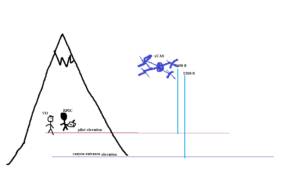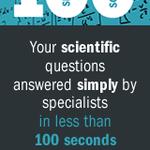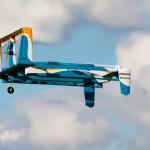By Olivia Juarez
As small unhumanned aircraft system (sUAS) technology has become increasingly accessible for hobbyists and commercial enterprise, the Federal Aviation Administration (FAA) has had to contend with increasing demand for permitting commercial use of sUAS in recent months. As of August 29, 2016, the FAA set a pathway for commercial actors to employ drones with the Small Unmanned Aircraft Rule (14 C.F.R. Part 107). This regulation integrates sUAS into national airspace, permitting the commercial operation of sUAS with licensing, operational, and safety provisions. The new Rule provides a pathway for commercial sUAS operators to safely market their technological skills and services. Namely, the Rule ensures that sUAS operators are aware of all withstanding safety provisions and can fly within those guidelines.
Although it has been a short time since sUAS have been permitted for commercial use in the US, some efficacy gaps of the FAA’s sUAS Rule are already apparent. In this blog, I will examine two stipulations that stifle the advancement of commercial and potentially non-commercial sUAS operations: flight height restrictions and lack of use-based clarity.
First, the sUAS rule restricts flight to below 400 feet. This rule is imposed in consideration of prioritizing airspace for humanned aircraft, ensuring pilots, aircraft, and the environment is safe from potential collision or other contact conflicts. However, words matter and the “400 ft.” specification of this rule leaves open some space for interpretation.
Should a research team need to quantify the content of air at very high levels in want of strictly adhering to the FAA’s 400 ft. rule, some unreasonable steps would need to be taken. They could travel to a high remote elevation, such as a mountain’s canyon, where the UAS would be flown no more than 400 feet above the ground level of the remote pilot in control with the aid of a visual observer. However, as the UAS gets further from the slope of the mountain, UAS height would exceed 400 feet relative to the ground level beneath the aircraft (figure 1). In this case, the researchers would adhere to the FAA rule in relation to the remote pilot in control, but they would be in violation of the rule relative to the UAS position above ground. 400 ft. is 400 ft. wherever a person may go, but it is unclear if the rule strictly pertains to the UAS’s height relative to the pilot or the ground. Here we can see just one case in which the FAA’s sUAS rules fall short of sufficiently permitting sUAS use even with a remote pilot in control certification.
In reality, a researcher’s needs for their projects will likely not permit the opportunity to usurp the 400 ft rule by operating from a mountain. For the best of scientific epistemology, space is more reasonably be measured by way other than distance.
According to a University of Utah atmospheric scientist, research using sUAS has been conducted at high altitude by measuring recorded data in atmospheric pressure (atm). Measuring in atm is commonly done in atmospheric sciences for meteorology; in the case of the U, for measuring air content such as particulate matter and gasses. U of U researchers reported to our class that they took all necessary safety provisions to collect atmospheric data in a remote outdoor public space, where no reasonable expectation of privacy exists, measuring their sUAS-collected data in atm instead of distance.
While it is unclear whether the FAA would prosecute for this kind of use, this employment of sUAS at high elevations amid safe conditions points to a missing component of the FAA’s regulatory function. There are clearly places and methods for operating sUAS at altitudes higher than 400 ft., but the FAA offers no protocol for researchers to apply for temporary exemption to any Rule stipulations.
I must add that should additional researchers wish to conduct data collection outside of the FAA’s regulations by measuring in other ways rather than distance, they should do so with full awareness that they are subject to the FAA’s interpretation of distance related to the sUAS and remote pilot in control.
Despite the hypothetical case and the loophole examined, the prohibition of flight exceeding 400 ft. poses real barriers to modernizing outdated research methodology. Atmospheric scientists still use balloons to record data regularly, thereby accepting the balloon litter that will be left behind as a consequence of their use. University of Utah professor John Horel demonstrated in a November 2, 2016 class demonstration that the same data can sustainably be collected via sUAS, noting that one consequence of current use of balloons is that wildlife can choke on balloon pieces after balloons inevitably make their way back to earth.
Horel further stated that much needed data about air content at high altitude in urban areas is inaccessible due to the FAA’s restriction. The ability of UAS to hover offers researchers the potential to collect localized data in spaces unmeasurable before, but there is no easy way for researchers to gain special permit for high altitude research flights. Researchers face difficulty in consulting the FAA for special temporary permits due to the lack of standard protocol, and lack of transparency on who to consult when flight restrictions are taking place. The FAA offers no temporary exemption process for researchers to supersede the altitude regulation.
Finally, some states are unclear on where commercial and research-based operations are separate uses. The state of Arkansas passed a bill requiring the FAA to determine whether sUAS used for aeronautical research qualifies as “commercial purpose,” or “aeronautical research and platform-based research.” The FAA has not developed procedures for safe, beyond-line-of-sight operation of aeronautical research sUAS, let alone for research overall.
In sum, sUAS capabilities offer vast potential to better understand our world, and even assist in solving public health issues such as poor air quality. The FAA needs to develop protocol to permit special sUAS use in academic settings, for research purposes. This should include communication transparency between local air traffic control, and researchers to most safely conduct research.






